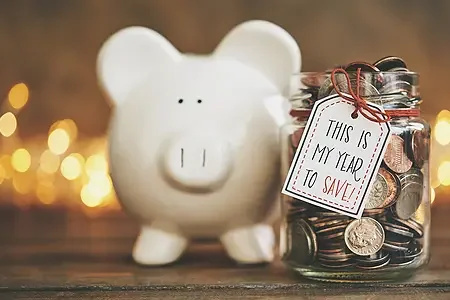Don't think you're an investor? If you’re in KiwiSaver, you are.
By MAS Team | 20 July 2022
By MAS Team | 20 July 2022
While we talk about putting money into your KiwiSaver scheme fund as a great way to save toward your first home or for retirement, it’s actually not a savings account. A KiwiSaver scheme is an investment scheme, where your money is used to buy ‘units’ in a fund which then holds investments like shares, bonds, or commercial property. And just like an investment in shares or in a business, KiwiSaver investments do involve some risk.
Find out more about how your KiwiSaver scheme fund is invested and how to choose an investment approach that works for you.
Every dollar that you contribute to your KiwiSaver account - as well as your employer’s contributions and the annual Government top-up - is invested by your KiwiSaver scheme provider on your behalf.
Your contributions are used to buy ‘units’ in a fund. That fund then buys assets in accordance with its investment strategy, with the aim of these assets increasing in value and making you more money. The return on the investments is then reinvested for you and starts to earn its own returns - this process is called ‘compound returns’, and it’s a powerful way to grow your balance over the long term.
As the value of the units goes up and down, so will your KiwiSaver scheme balance.
There’s no single approach to investing with KiwiSaver that works for everyone. How you choose your approach to your KiwiSaver investment will depend on your own financial situation and goals, like whether you’re planning on making a first home withdrawal soon or whether you have additional retirement savings on top of your KiwiSaver investment.
While the actual details of which assets to buy and sell are managed behind the scenes by the scheme’s manager, KiwiSaver scheme members can choose an investment strategy that works for them and their financial goals. There are five types of funds you can choose from, ranging from the lowest risk ‘defensive’ funds to ‘aggressive’ funds, which invest in more growth assets and have a higher level of risk.

As with all investments, there’s no reward without risk. The riskier your strategy is, the larger both your gains and falls could be. Those who choose to invest in growth or aggressive funds are most likely to see higher growth in the long term, but they’re also more exposed to potential drops in value. These people probably saw the biggest drops in their KiwiSaver balances when markets fell briefly at the start of the COVID crisis, compared with people who hold defensive, conservative, or balanced funds.
If you’re in a growth or aggressive fund and planning on making a KiwiSaver withdrawal in the next few years, it’s worth considering switching to a lower-risk fund, to reduce your exposure to a downfall in the market. But if you’re looking more than 10 years ahead, a growth or aggressive fund might be best for you, letting you ride out bumps in the market while potentially growing your balance more.
Because KiwiSaver is a government initiative, it has some brilliant benefits that other investment funds don’t. One big plus is the Government KiwiSaver top-up, which is an incentive for members to contribute at least $1,042.86 each year. The Government will match 50c of every dollar you put in up to that limit. There are a few other conditions you need to meet to get this top-up, but it’s essentially free money as a reward for being a consistent contributor.
Another benefit of being a member of a KiwiSaver scheme is the employer contribution programme. In most cases, your employer must contribute at least 3% of your gross earnings to your KiwiSaver account, on top of your regular pay. If you have a “gross remuneration” arrangement, the employer contribution of 3% will be taken from your overall pay.
Find out more about joining the KiwiSaver Scheme that's driven by purpose, not profit.
Please note: This article provides general information only and is not a substitute for professional and individually tailored advice. Please speak with a MAS adviser before making investment decisions.
Medical Funds Management Limited is the manager and issuer of investments in the MAS KiwiSaver Scheme (the Scheme). A copy of the Product Disclosure Statement (PDS) for the Scheme is available here.

7 December 2021
Choosing between an actively and a passively managed KiwiSaver fund will depend on your own financial goals and priorities. Both strategies have their pros and cons, so it's important to understand their differences.

19 January 2024
Whatever your age or life stage, we've got a range of money and investing tips to help you stay in top financial shape in 2024.

9 September 2019
There are benefits to using a credit card, they can help you build a positive credit score and you can often receive perks such as Airpoints or other cash rewards. But when abused, they can put you deep into a financial hole.